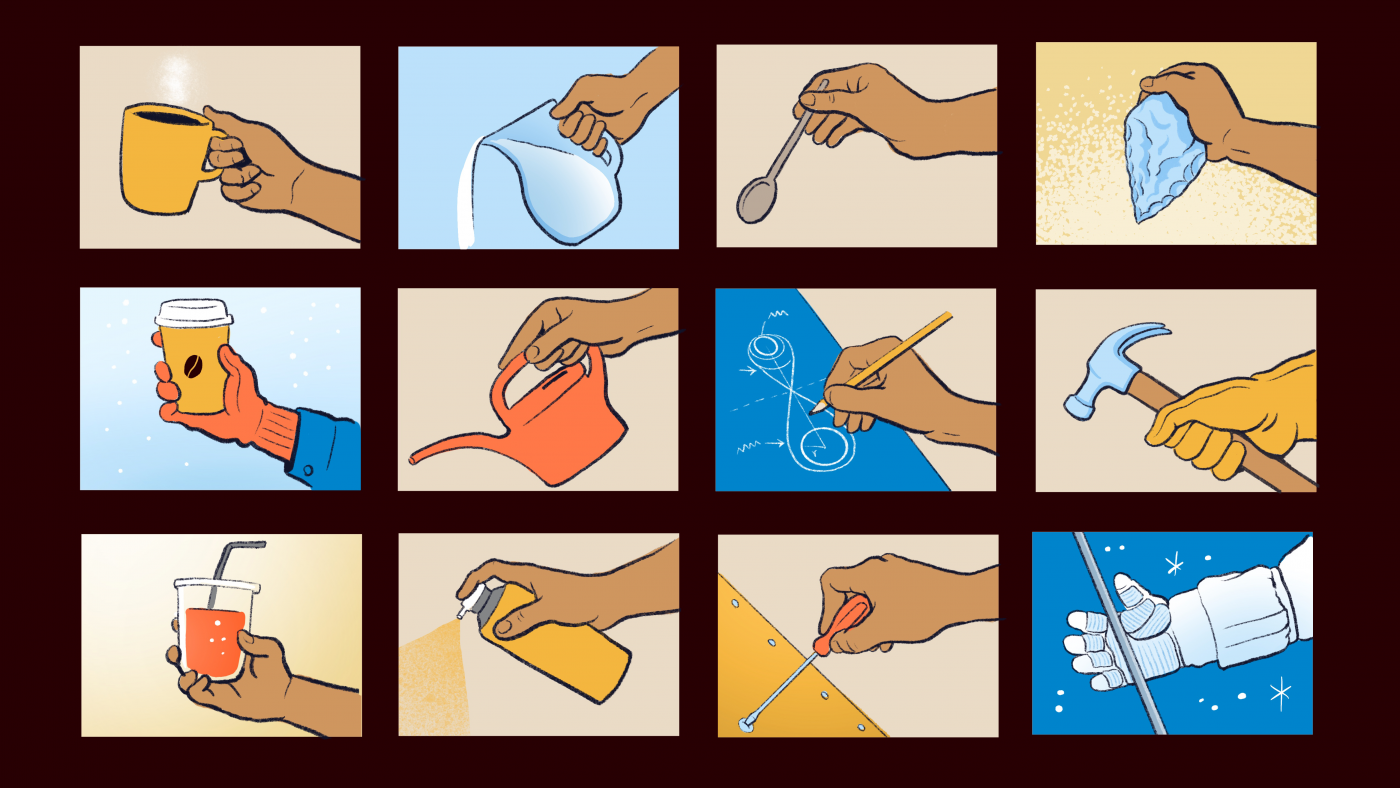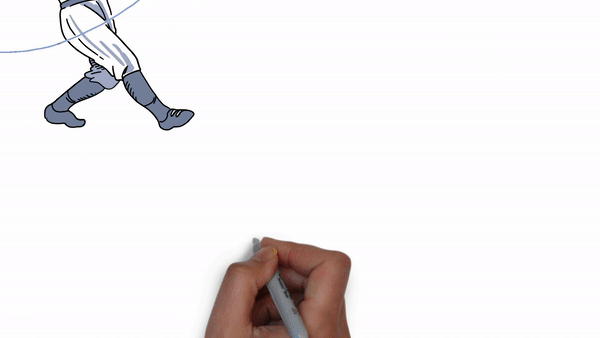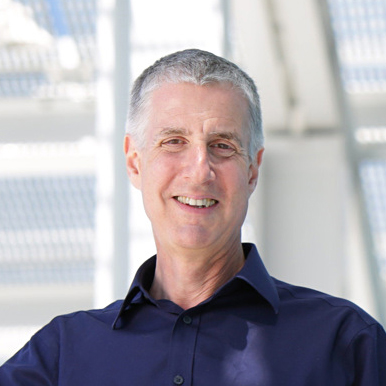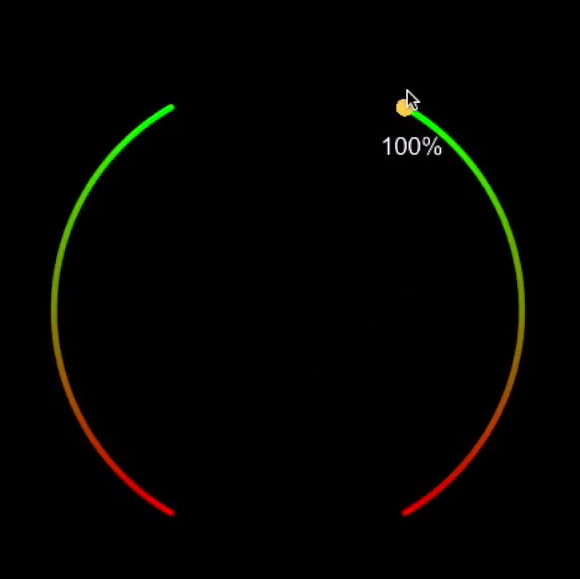How is it that a chef can control their knife to fillet a fish or peel a grape and can wield a cleaver just as efficiently as a paring knife? Even those of us less proficient in the kitchen learn to skillfully handle an astonishing number of different objects throughout our lives, from shoelaces to tennis rackets. This ability to continuously acquire new skills, without forgetting or degrading old ones, comes naturally to humans but is a major challenge even for today’s most advanced artificial intelligence systems.
Now, scientists have developed and experimentally verified a new mathematical theory that explains how the human brain achieves this feat. Called the COntextual INference (COIN) model, it suggests that identifying the current context is key to learning how to move our bodies. The model describes a mechanism in the brain that is constantly trying to figure out the current context. The theory suggests that these continuously changing beliefs about context determine how to use existing memories — and whether to form new memories. Led by scientists at Columbia University’s Zuckerman Institute, the research appeared November 24 in Nature.
"Imagine playing tennis with a different racket than usual or switching from tennis to squash,” said last author Daniel Wolpert, PhD, a principal investigator at the Zuckerman Institute and a professor of neuroscience at Columbia’s Vagelos College of Physicians & Surgeons. “Our theory explores how your brain adjusts to these situations and whether to treat them as distinct contexts.”
According to the COIN model, the brain maintains a repertoire of motor memories, each associated with the context in which it was created, such as playing squash versus tennis. Even for a single swing of the racket, the brain can draw upon many memories, each in proportion to how much the brain believes it is currently in the context in which that memory was created. This goes against the traditional view that only one memory is used at a time. To improve performance on the next swing, the brain also updates all memories, once again depending on its belief about the current context. When the context of the movement is judged to be novel (the first time we play squash after years of tennis, for example), the brain automatically creates a new memory for that context. This ensures that we do not overwrite previously established memories, such as the memory for playing tennis.
This research may lead to better physical therapy strategies to help people with injuries use their bodies again. Often the improvements seen in the setting of a physical therapist's office do not transfer to improvements out in the real world.
"With a better understanding of how context affects motor learning, you can think about how to nudge the brain to generalize what it learns to contexts outside of the physical therapy session,” said first author on the study James Heald, PhD, a postdoctoral researcher in the Wolpert lab. "A better understanding of the basic mechanisms that underlie the context dependence of memory and learning could have therapeutic consequences in this area."
"What I find exciting is that the principles of the COIN model may also generalize to many other forms of learning and memory, not just memories underlying our movement.” said study co-author Máté Lengyel, a professor of computational neuroscience at the University of Cambridge and a Senior Research Fellow at the Central European University. “For example, the spontaneous recurrence of seemingly forgotten memories, often triggered by a change in our surroundings, has been observed both in motor learning and in post-traumatic stress disorder."
Any model that attempts to explain how we move must account for how we adjust to this variability.
COINing a New Model
Practice with a tennis racket, and the brain forms motor memories of how you moved your arm and the rest of your body that improve your serve over time. But learning isn’t as simple as just making better memories to make movements more precise, the researchers said. Otherwise, a tennis player’s serves might improve to the point at which they never hit a ball out of bounds. The real world and our nervous systems are complex, and the brain has to deal with a lot of variability.
"Every time you move an object, there is variability: in the object itself, the environment in which you use it, the signals your brain issues to move your body and the sensory perceptions you have of the object and environment," said Dr. Heald. "Any model that attempts to explain how we move must account for how we adjust to this variability.”
How does the brain distinguish this noise — these random fluctuations — from new situations? And how does it understand that a slightly lighter tennis racket can still be operated using previous tennis racket memories? But that a table tennis paddle is an entirely different kind of object that requires starting from scratch?
The answer, according to the COIN model, may be Bayesian inference, a mathematical technique used to deal with uncertainty. This method statistically weighs new evidence in light of prior experience in order to update one's beliefs in a changeable world. In the COIN model, a context is a simplifying assumption that, in a given set of circumstances, certain actions are more likely to lead to some consequences than others. The new theory's acceptance of the role that uncertainty plays in motor learning is similar to how quantum physics views the universe in terms of probabilities instead of certainties, the scientists noted.
Getting a Handle on the Theory
The researchers put the COIN model to the test on data from previous experiments, as well as new experiments, in which volunteers interacted with a robotic handle. Participants learned to manipulate the handle to reach a target while the handle pushed back in different ways.
Volunteers who spent time learning to operate the handle as it pushed to the left, for instance, had more trouble operating the handle when it changed behavior and pushed to the right, as compared to volunteers who started with a handle pushing to the right. The COIN model explained this effect, called anterograde interference.
"The longer you learn one task, the less likely you are to move into a new context with the second task," said Dr. Wolpert. “You’re still forming a motor memory of the second task, but you’re not using it yet because your brain is still stuck back in the first context.”
The model also predicted that a learned skill can re-emerge even after subsequent training seems to have erased it. Called spontaneous recovery, this reemergence is seen in many other forms of learning besides motor learning. For example, spontaneous recovery has been linked with challenges in treating post-traumatic stress disorder, where contexts can trigger traumatic memories to spontaneously recur.
Scientists usually explain spontaneous recovery by invoking two different learning mechanisms. In one, memories learned quickly are forgotten quickly, and in the other, memories learned slowly are forgotten slowly, and can thus reappear. In contrast, the COIN model suggests there is just one mechanism for learning instead of two separate ones, and that memories that apparently vanished may be ready to pop back with the right trigger: the belief that the context has reemerged. The researchers confirmed this in their lab with new experiments.
###
This paper, “Contextual inference underlies the learning of sensorimotor repertoires,” appeared on November 17 in Nature.
This work was supported by the European Research Council (ERC) under the European Union’s Horizon 2020 research and innovation programme (grant no. 726090 to M.L.), the Wellcome Trust (Investigator Awards 212262/Z/18/Z to M.L. and 097803/Z/11/Z to D.M.W.), the Royal Society (Noreen Murray Professorship in Neurobiology to D.M.W), the National Institutes of Health (R01NS117699 and U19NS104649 to D.M.W.) and Engineering and Physical Sciences Research Council (studentship to J.B.H). The authors declare no competing interests.



